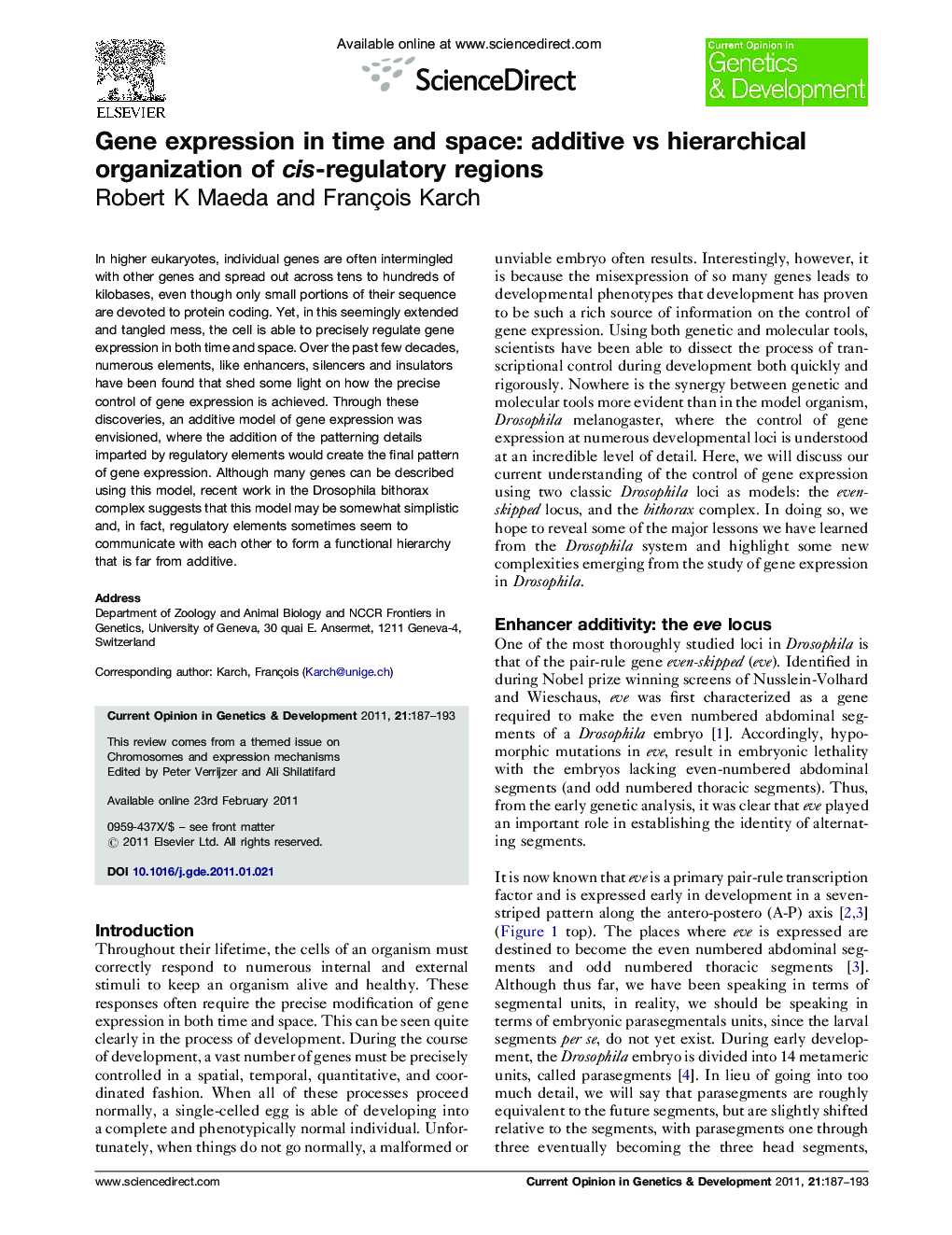| Article ID | Journal | Published Year | Pages | File Type |
|---|---|---|---|---|
| 2785001 | Current Opinion in Genetics & Development | 2011 | 7 Pages |
In higher eukaryotes, individual genes are often intermingled with other genes and spread out across tens to hundreds of kilobases, even though only small portions of their sequence are devoted to protein coding. Yet, in this seemingly extended and tangled mess, the cell is able to precisely regulate gene expression in both time and space. Over the past few decades, numerous elements, like enhancers, silencers and insulators have been found that shed some light on how the precise control of gene expression is achieved. Through these discoveries, an additive model of gene expression was envisioned, where the addition of the patterning details imparted by regulatory elements would create the final pattern of gene expression. Although many genes can be described using this model, recent work in the Drosophila bithorax complex suggests that this model may be somewhat simplistic and, in fact, regulatory elements sometimes seem to communicate with each other to form a functional hierarchy that is far from additive.
